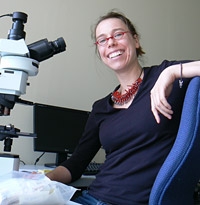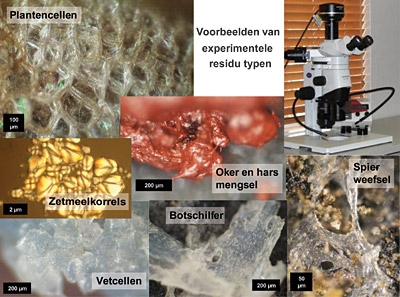Veni Research Geeske Langejans
The Netherlands Organisation for Scientific Research has awarded dr. Geeske Langejans a Veni grant for the research project What's in a plant? Tracking early human behaviour through plant processing and exploitation.
 The timing and complexity of early modern human behaviours are crucial in archaeological Stone Age research. For decades the earliest symbols (art) and hunting strategies have been the focus of study. The first modern humans appear during the African Middle Stone Age (MSA ~250.000 to 30.000 years ago). To understand their appearance it is essential to comprehend their ancient foraging activities. Today, plants form an important part of hunter-gatherer diets, but plant foods have been largely neglected in Stone Age research.
The timing and complexity of early modern human behaviours are crucial in archaeological Stone Age research. For decades the earliest symbols (art) and hunting strategies have been the focus of study. The first modern humans appear during the African Middle Stone Age (MSA ~250.000 to 30.000 years ago). To understand their appearance it is essential to comprehend their ancient foraging activities. Today, plants form an important part of hunter-gatherer diets, but plant foods have been largely neglected in Stone Age research.
Therefore, to elucidate the role of plants, Geeske Langejans aims to track potential changes of the plant food component of MSA diets. To do so she will analyse grindstones and scrapers from various southern African sites, dated between ~115.000 and ~12.000 years ago. She will identify the processed plant species by applying residue and starch analysis and reconstruct how these stone tools were used. This study is the first to use residue/starch analysis on MSA grindstones and scrapers. Residue and starch analysis study microscopic organic remains, left on tools after use. Starch grains, the ubiquitous component of carbohydrate rich foods, are particularly attractive to study; the cells can be visually identified to species level and provide a wealth of information.
 Although her previous research indicates that organic residues can preserve, this is not widely accepted for starch. Therefore, she aims to settle this debate by experimentally testing starch durability. Recent results from MSA pilot-studies also confirm preservation and this makes starch/residue analysis a potentially valuable tool that supplies a data set, additional to current archaeological data.
Although her previous research indicates that organic residues can preserve, this is not widely accepted for starch. Therefore, she aims to settle this debate by experimentally testing starch durability. Recent results from MSA pilot-studies also confirm preservation and this makes starch/residue analysis a potentially valuable tool that supplies a data set, additional to current archaeological data.
By analysing tools from different periods I aim to observe changes in plant exploitation through time. Combined with knowledge on population responses to environmental change and seasonal organisation of foraging, these results will provide novel insights into the niche of ancient hunter-gatherers.
